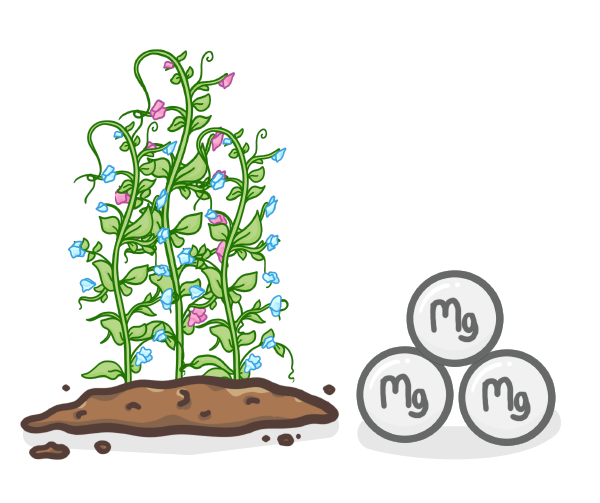Welcome to the Quiz!
This quiz contains 16 questions from a mix of 1 subtopics.
The three main causes of plant diseases:
- Infection by microorganisms such as fungi, , or viruses.
- Attack by larger organisms, such as insects.
- Lack of essential , such as nitrates, or magnesium ions.
|
What is the primary mode of transmission for tobacco mosaic virus (TMV)?
Direct contact with infected plants
Spores from the soil
Airborne spores
Seed transmission
|
What is a common symptom of barley powdery mildew infection?
Root galls
Tumour-like growths on stems
Yellow mosaic patterns on leaves
Powdery spots on leaves
|
How does the pathogen that causes crown gall disease enter the plant?
Through the vascular system
Through stomata on the leaves
Through the roots during water uptake
Through wounds on the plant
|
Why do plants require nitrates?
To make carbohydrates
To make chlorophyll
To make lipids
To make proteins
|
Which of the following is a symptom of nitrate deficiency (lack of nitrates) in a plant?
Chlorosis (yellow leaves due to lack of chlorophyll)
Stunted growth
Small holes in the leaves
Brown spots on the leaves
|

Why do plants require magnesium?
To make chlorophyll
To make lipids
To make carbohydrates
To make proteins
|
What is the main symptom of magnesium deficiency (lack of magnesium) for a plant?
Chlorosis (yellow leaves due to lack of chlorophyll)
Brown spots on the leaves
Small holes in the leaves
Purple leaves
|
List three physical changes that could indicate that a plant has a disease.
|
Give three ways in which plant diseases can be identified.
|
Plants have many defences against pathogens. What do we mean by physical defences?
Defences that physically prevent the entry of pathogens
Chemicals that plants can secrete to destroy pathogens
Structures that reduce the chance of being attacked
|
Which of the following plant defences are considered physical defences?
(Select all that apply)
Production of antimicrobial substances
A waxy cuticle on the leaves and stems
Strong cellulose cell walls
Layers of dead cells around the trunk (bark)
Thorns and hairs
|
Plants have many defences against pathogens. What do we mean by chemical defences?
Structures that reduce the chance of being attacked
Defences that physically prevent the entry of pathogens
Chemicals that plants can secrete to destroy pathogens
|
Which of the following plant defences are considered chemical defences?
(Select all that apply)
Mimicking other organisms to trick animals
Production of antimicrobial substances
Production of poisons that kill insects
Layers of dead cells around the trunk (bark)
|
Plants have many defences against pathogens. What do we mean by mechanical defences?
Defences that physically prevent the entry of pathogens
Structures that reduce the chance of being attacked
Chemicals that plants can secrete to destroy pathogens
|
Which of the following plant defences are considered mechanical defences?
(Select all that apply)
Production of antimicrobial substances
Mimicking other organisms to trick animals
Leave that curl or droop when insects land on them
Hairs and thorns
|